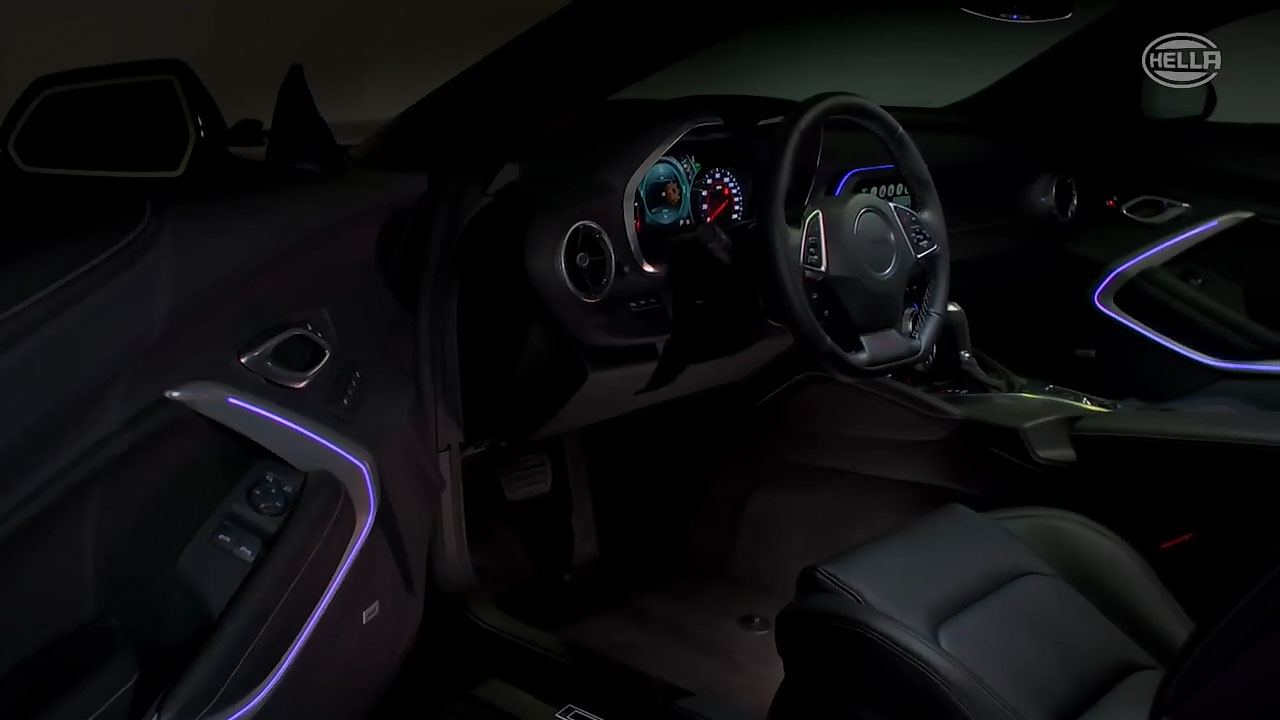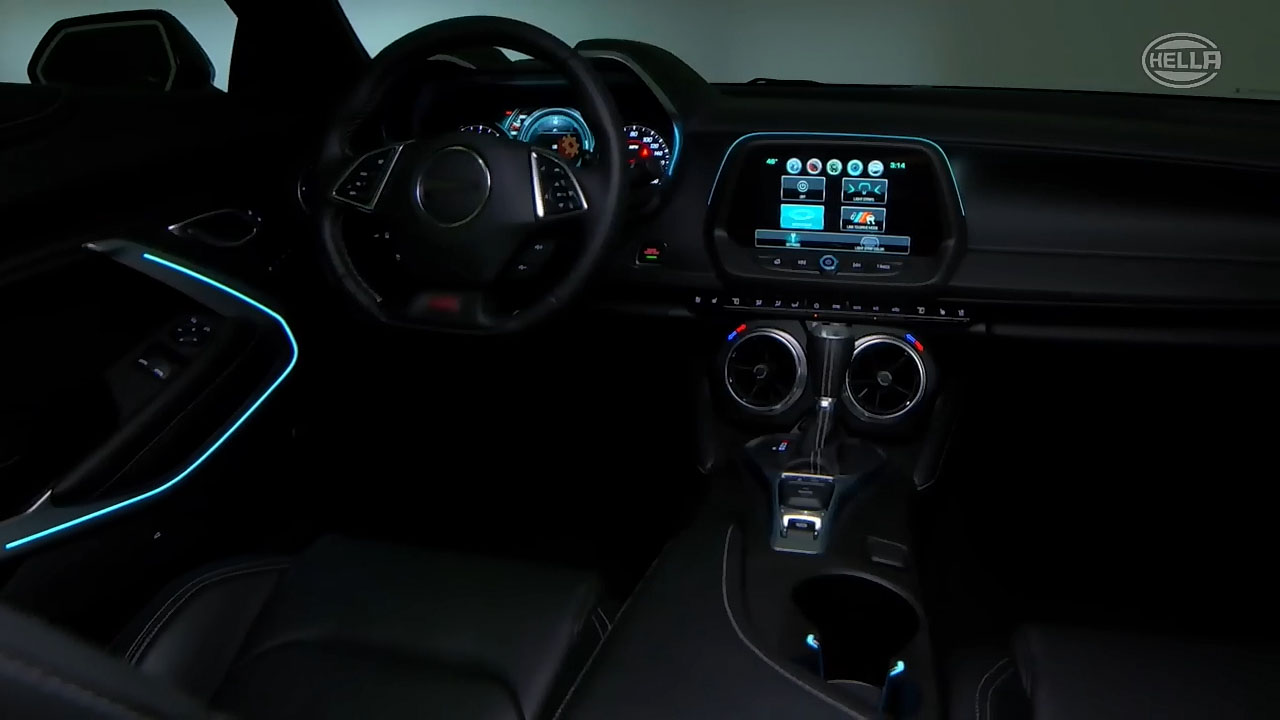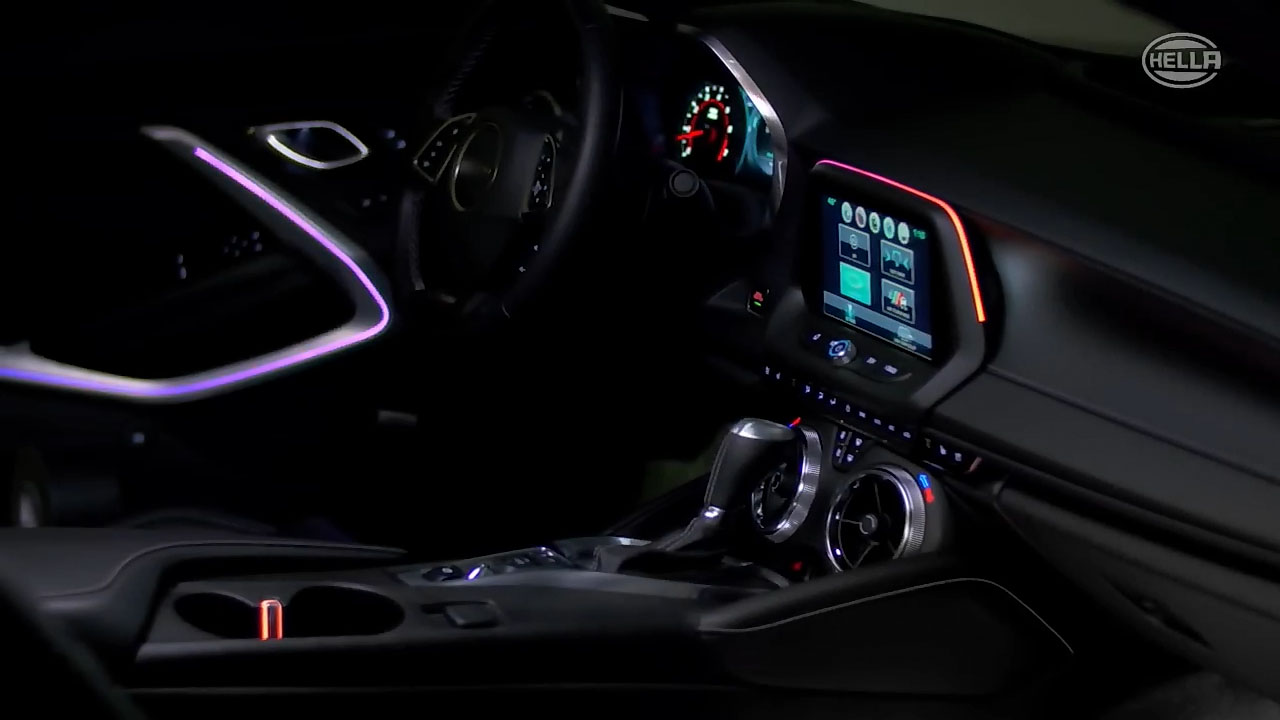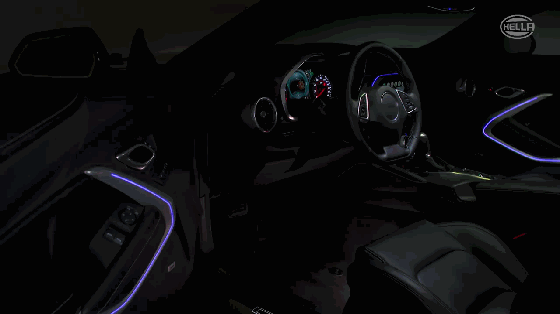
Hella Dynamic Interior Accent Light
LEDs are becoming more and more popular as light sources in the field of interior lighting, as in other sectors. Already a long-established fixture of the instrument panel, these lights can now also be used for interior lighting and reading lamps, thanks to steady gains in the power and versatility of white and colored LEDs – which also offer low power consumption compared to filament bulbs. This opens up a whole range of decorative design possibilities for the cockpit in addition to the functional lighting aspect.

The interior lighting can be customized, with different colours assigned to different driving modes. In park mode, the model even offers a ‘car show’ mode, whereby changing colours flow outwards from the instrument panel to the rest of the interior.
Meanwhile, earlier this year, at CES 2017, Toyota revealed its Concept-I vehicle, which features an AI assistant – named Yui – which uses light and sound to communicate with the driver. For example, coloured lighting illuminates the footwell to indicate whether the vehicle is in manual or self-driving mode. The exterior of the car also uses light to communicate with driver and surroundings.

Other automakers are following suit, and turning their attention to the development of interior lighting concepts as a means of brand differentiation. With increasing pressure on automakers to deliver fuel-efficient, low-emission engines, speed and performance is becoming less of a differentiator, so many see ambient lighting as the next battleground.
LED lights are leading the charge, thanks to their small size, low cost, and energy efficiency. But there is also a trend away from single-colored lighting to designs that incorporate two, three and even four colors. The use of LEDs in combination with multi-color chips expands the options even further.

It’s likely that innovation will come thick and fast. LED’s could create not only moods but also effects, such as ‘sparks’ and ‘floating’ light effects.
It’s likely that other light sources will start to find their niche in internal lighting too. Halogen, electroluminescence, and cold-cathode fluorescent (CCFT) offer specific use cases.
Current trends such as autonomous driving and the desire for individualization strongly impact interior vehicle design. “Drivers increasingly want the option to adjust lighting to their requirements, for e.g. creating an individual feel-good atmosphere during their commute”, says John Kuijpers, Head of the Car Body and Interior Lighting business at HELLA. “But the trend towards autonomous driving creates new challenges for interior lighting. For when people no longer need to drive themselves, the frequently rigid seating positions are broken up and comfort enters into focus. Lighting has a special status here.” Together with automotive manufacturer Audi, lighting and electronics expert HELLA has developed customizable and dynamic lighting functions for the vehicle interior.

